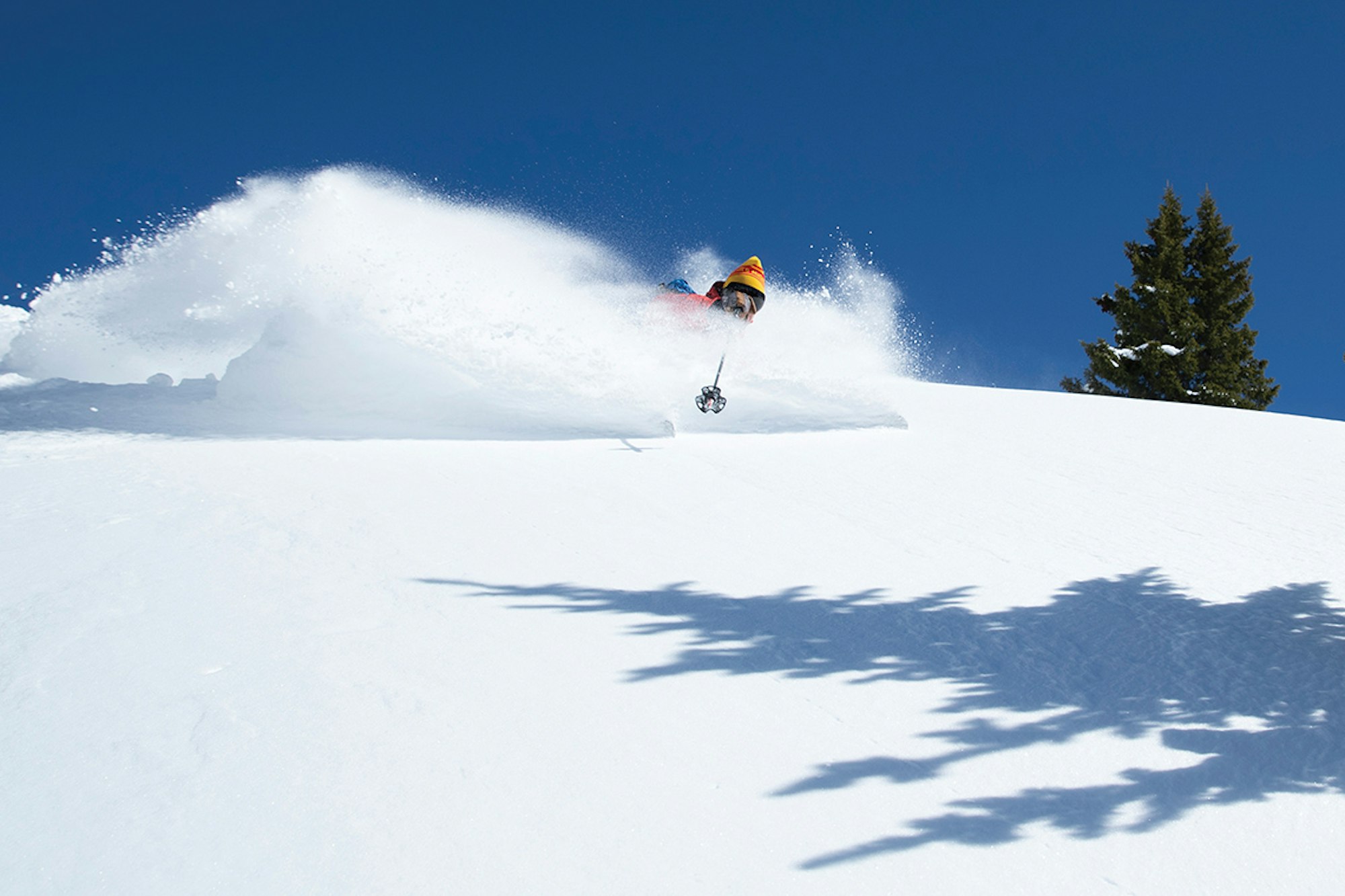

WORDS • PADDY O’CONNELL | PHOTOS • ANDREW WARKENTIN
There was something poetic about it all. I wasn’t even supposed to be there. I was supposed to be chasing the ghost of deep powder snow mystic, author and ecologist Dolores LaChapelle. But the snowy duvet that quilted Telluride with more than two feet of new powder in just 30 hours had closed all the roads. I wouldn’t be able to drive to Silverton for at least a day or two. I had to laugh. I had Dolores’ book with me; the 100-page, out of print and subsequently $165 Deep Powder Snow. It details a life devoted to the glossy enchantment and powder-day bliss that was currently swirling within and around me. And I couldn’t help but feel Dolores had created the blizzard, that her spirit had summoned the twinkling ecstasy of profound snow from the Great Beyond.
At the close of World War II, when she was a teen, Dolores bought her first pair of skis from a sporting goods store near her home in North Denver. They were surplus Army skis; seven feet long, all white, made from hickory and as stiff as a framing stud. But to Dolores, they were perfect. That Christmas, 1944, she skied for the first time during a Colorado Mountain Club trip at a cabin on Loveland Pass. She and her sister Pat thumbed a ride to the top of the pass, strapped their monstrous skis to their leather boots and flailed and wallowed their way through powder fields back to the cabin. They were wet, cold, completely ill-prepared and lacked any knowledge of technique, even the basics. “That was my first experience skiing,” Dolores wrote in Deep Powder Snow, “but I knew this is what I wanted to do the rest of my life.”
Dolores majored in history and minored in teaching at the University of Denver, but her main focus was skiing. She accelerated her class schedule so she could graduate in three years and move to a mountain town. In 1947, she accepted a teaching job in Aspen, mainly due to the installation of a chairlift, a novelty at the time. She used the lift to access the undisturbed snow on Bell Mountain, so she could ski to her liking.
It would still be a handful of years before the introduction of the first snow-packing machines. In the 1940s, ski trails were chopped into narrow runs of a few hundred yards, and the snow compacted by skier traffic. Skiing on chunky, ground-up snow on crowded slopes the length of sledding hills did not appeal in the slightest to Dolores, but it was the norm in the burgeoning American ski culture of the 1940s and 1950s. The skiers of the time had no concept of off-piste skiing. But Dolores was among the first and the few in the U.S. to pioneer backcountry skiing and the pursuit of wild snow. Untracked powder beckoned her.
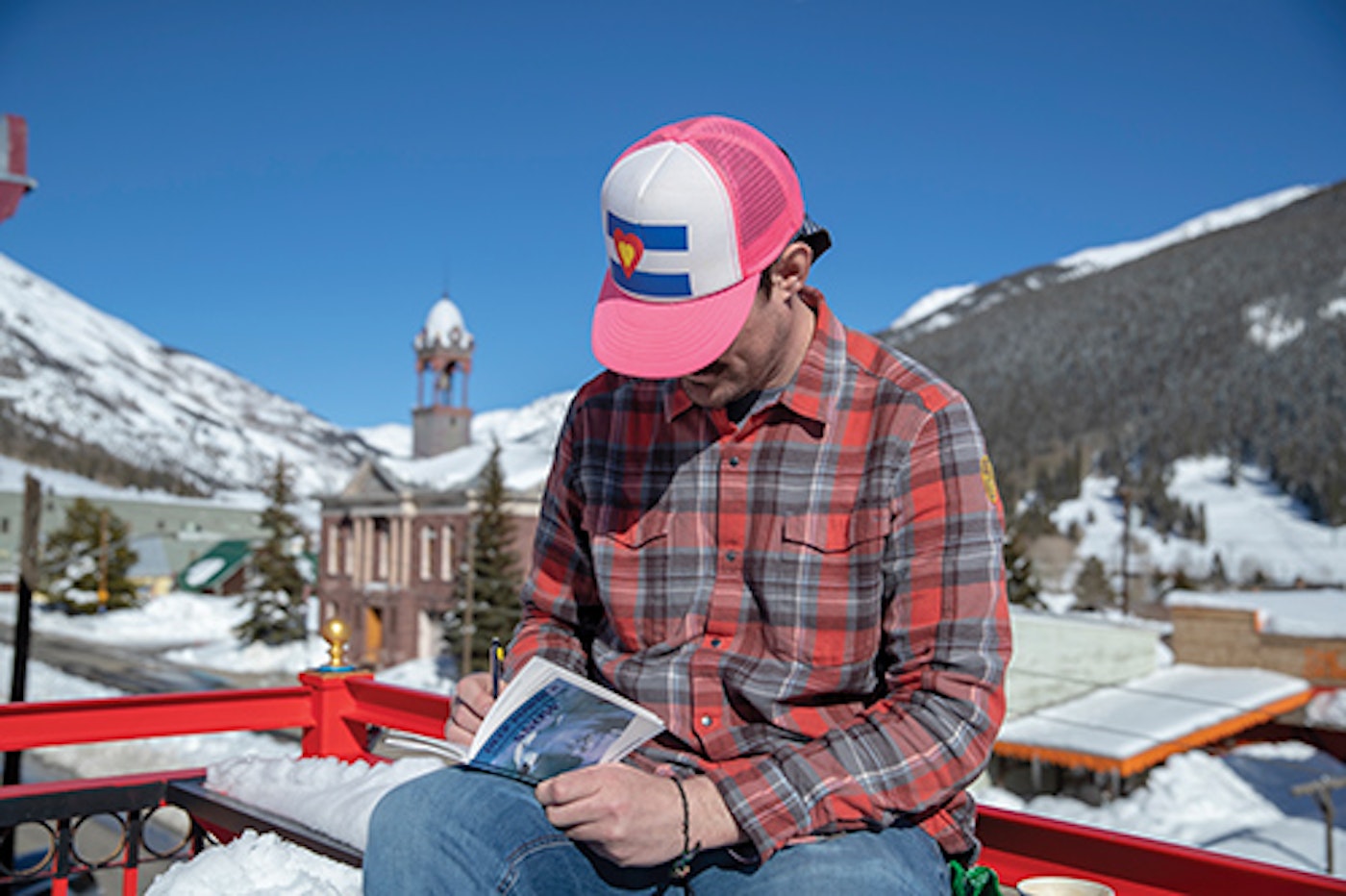
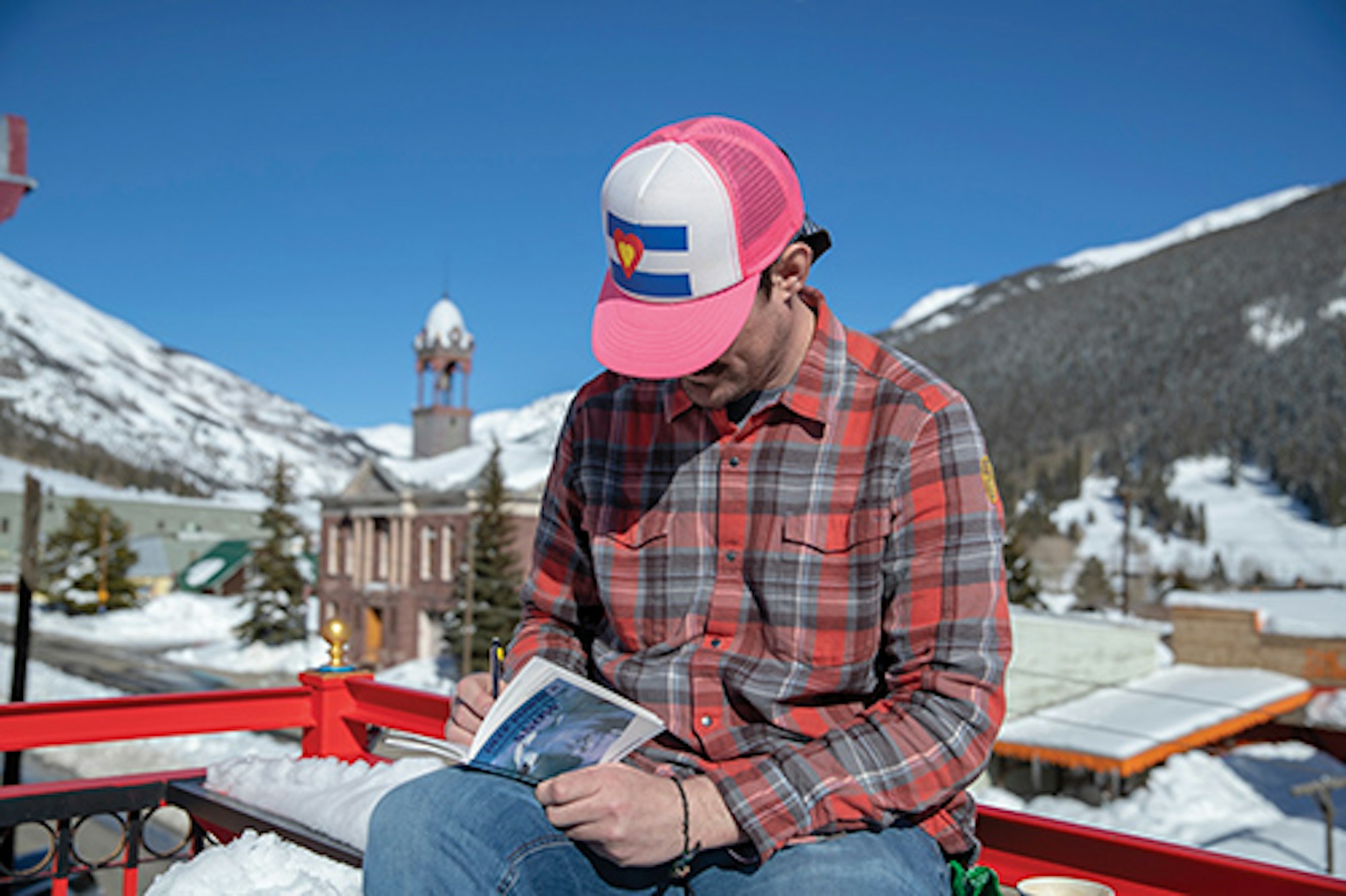
Dolores found other deep-snow disciples in Aspen, albeit few. She was the only woman in their small group, and the technique and style she honed in Aspen changed her life—and skiing—forever. Dolores and her friends broke free from the robotic, stiff “Alberg Technique,” where the shoulders drive the action of the legs in a punchy, rigid motion. Lefty Cormier, a former member of the 10th Mountain Division, taught the group the single dipsy turn—invented by Alta’s famed Dick Durrance—where the legs move in a smooth and rhythmic pivoting roll while the upper body remains quiet and calm. It was the foundation of the modern powder turn.
The dipsy doodle and the double dipsy, where weight is evenly distributed on both skis, allowed Dolores to ski deep, steep and narrow terrain in a fluid motion, like water rolling over rock. The turn required speed, agility, commitment and what Dolores described as a “turning over” of one’s will to the mountain. When she learned this technique and perfected it, the skiing world took note. Warren Miller asked Dolores to pose for pictures. Her skiing partners and contemporaries, like Stein Eriksen, Alf Engen, Junior Bounous, Dick Bass and Jim McConkey, called her the best female powder skier in the world. When she and her husband, snow scientist Ed LaChapelle, lived in Davos, Switzerland, from 1950 to 1951, Swiss ski instructors asked her for powder skiing lessons and referred to her as “pulver schnee spezialist,” the powder snow specialist.
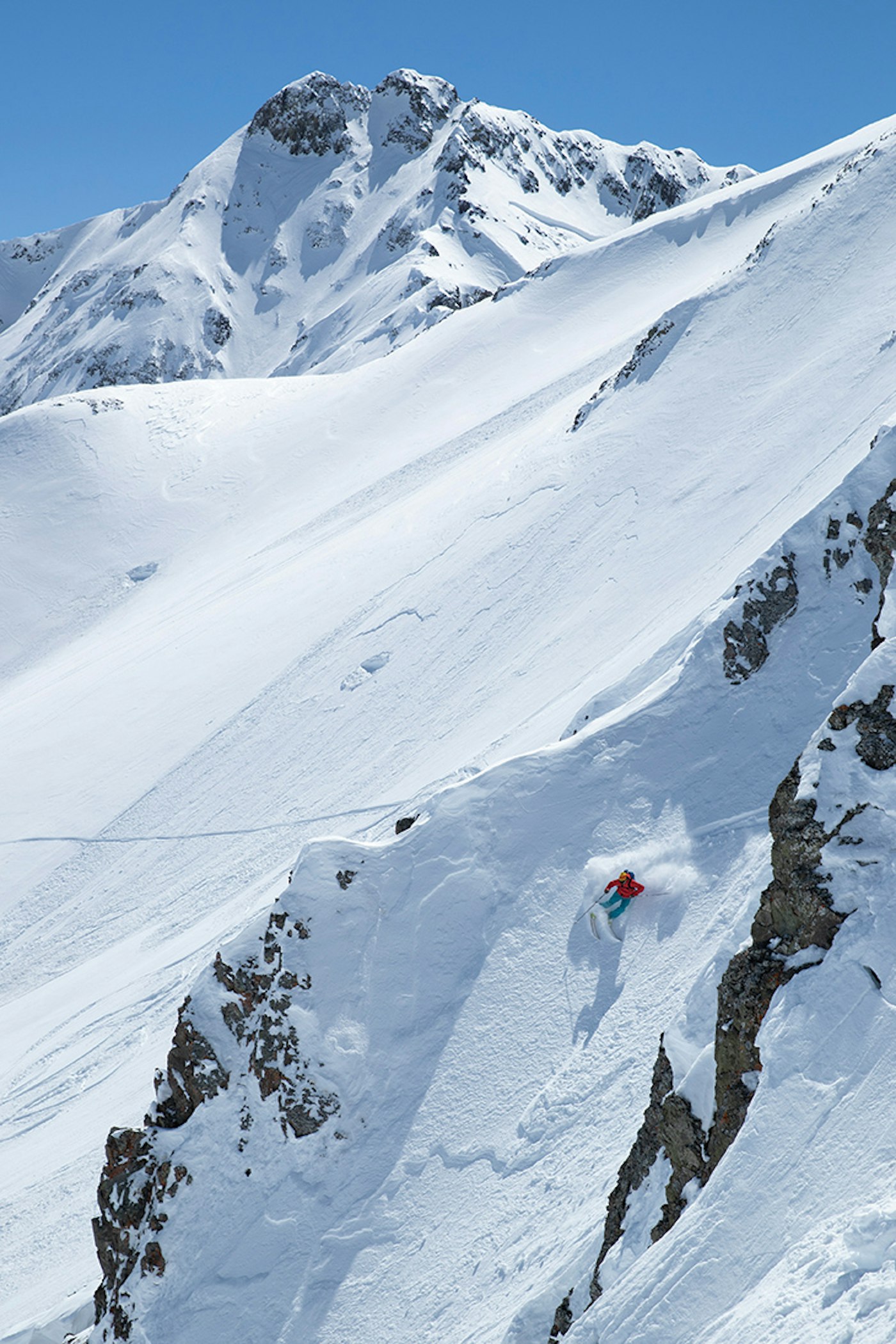
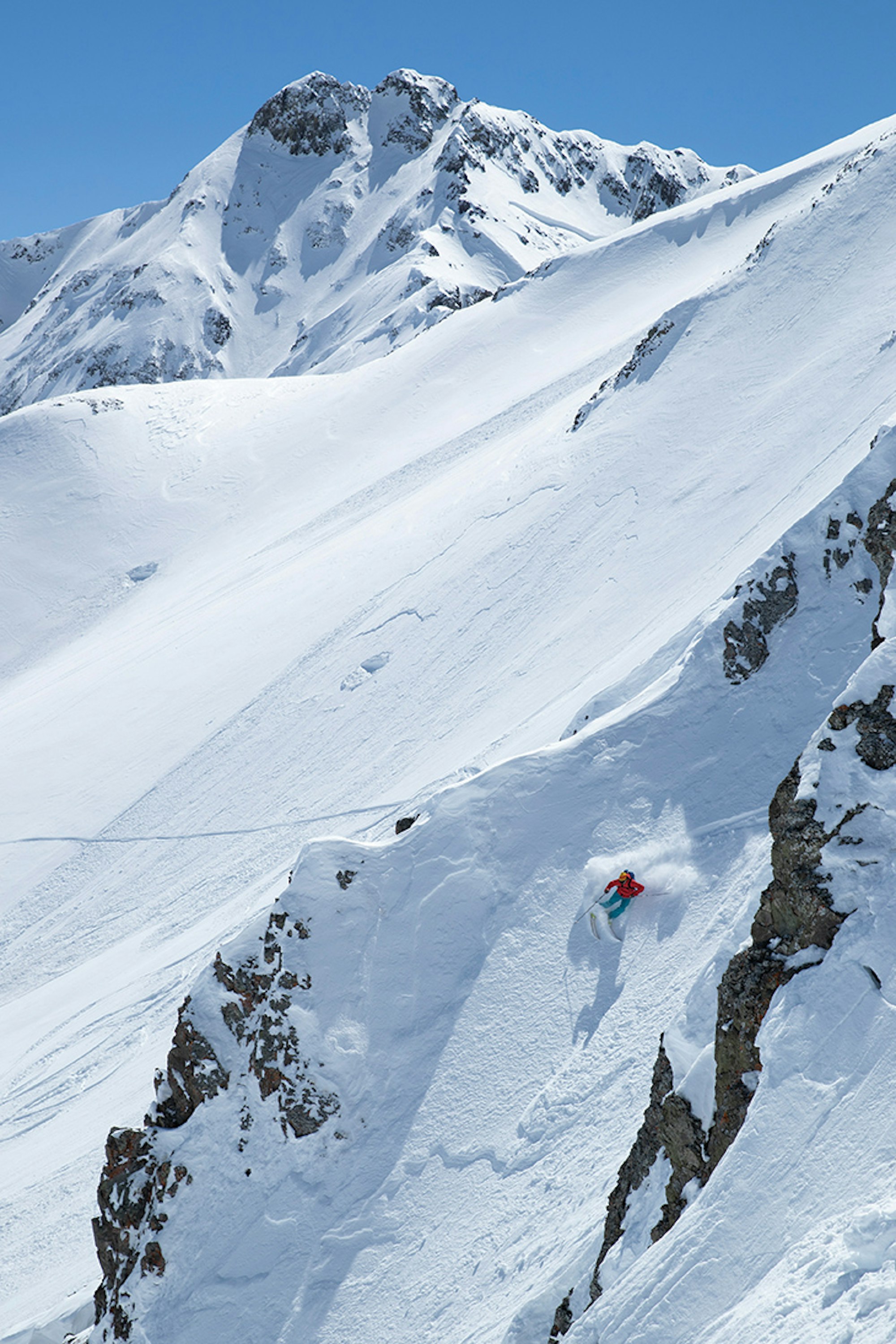
Skier: Paddy O’Connell | Location: Silverton Mountain, CO
In Alta and later in Silverton, Dolores’ style was revered in her adopted hometowns. Those who were lucky enough to ski with her say that her relaxed and enthusiastic technique never faltered. There was no choppiness in her turns and she never broke away from her elegant distinctiveness. It wasn’t power or command, trickery or quickness, Dolores melted into the terrain and the snow. Like a silk ribbon undulating in the wind, she skied with ease, comfort and grace, and in a form where it was impossible to determine where the mountain ended and Dolores began.
Before dropping into a run, Dolores would plunge the tails of her skis into the snow so her tips pointed directly down the fall line. She’d close her eyes, take a calming breath, lean downhill and make her first arc. But that was the only turn that she controlled. From there until the bottom, Dolores would allow the powder and the mountain to determine her line in rhythmic cooperation. Today, we call this the flow state—skiing with such heightened awareness and concentration that the very concept of time and space is lost.
Dolores would lose herself within the turn. She contended that it was here, and possibly only in the powder turn, that ego truly vanished. She spent her entire adult life studying and exploring this concept, becoming a deep ecologist and pouring herself into philosophy.
With a lack of understanding or even words to describe “this experience of ‘nothing’ when powder skiing,” Dolores found a kinship with Chinese Taoism and the concept of wu wei, meaning “do nothing.” It was in this philosophy that Dolores would find the words for her powder skiing state: “‘The fullness of the void,’ out of which all things come.” She practiced meditation, chanting, Tai Chi and anything else that might compare to the nothingness of a powder turn. Ultimately, she came to realize that there simply was no comparison and no substitute.
Though Dolores died in 2007, Silverton Mountain owner and longtime Silverton resident Jen Brill says she speaks to her all the time; in meditation, during spiritual wonderings, when it snows, Brill still feels Dolores’ presence. Brill began to follow Dolores’ teachings in college, consuming all of her books. The two met when Brill and her husband, Aaron, moved to Silverton in the late 1990s. By that time, Dolores no longer skied. But Brill attended Dolores’ free Tai Chi classes and her sometimes public, sometimes private—invitation only—conversations and chanting sessions focused on the endless search for the state of nothingness, the state of powder skiing.
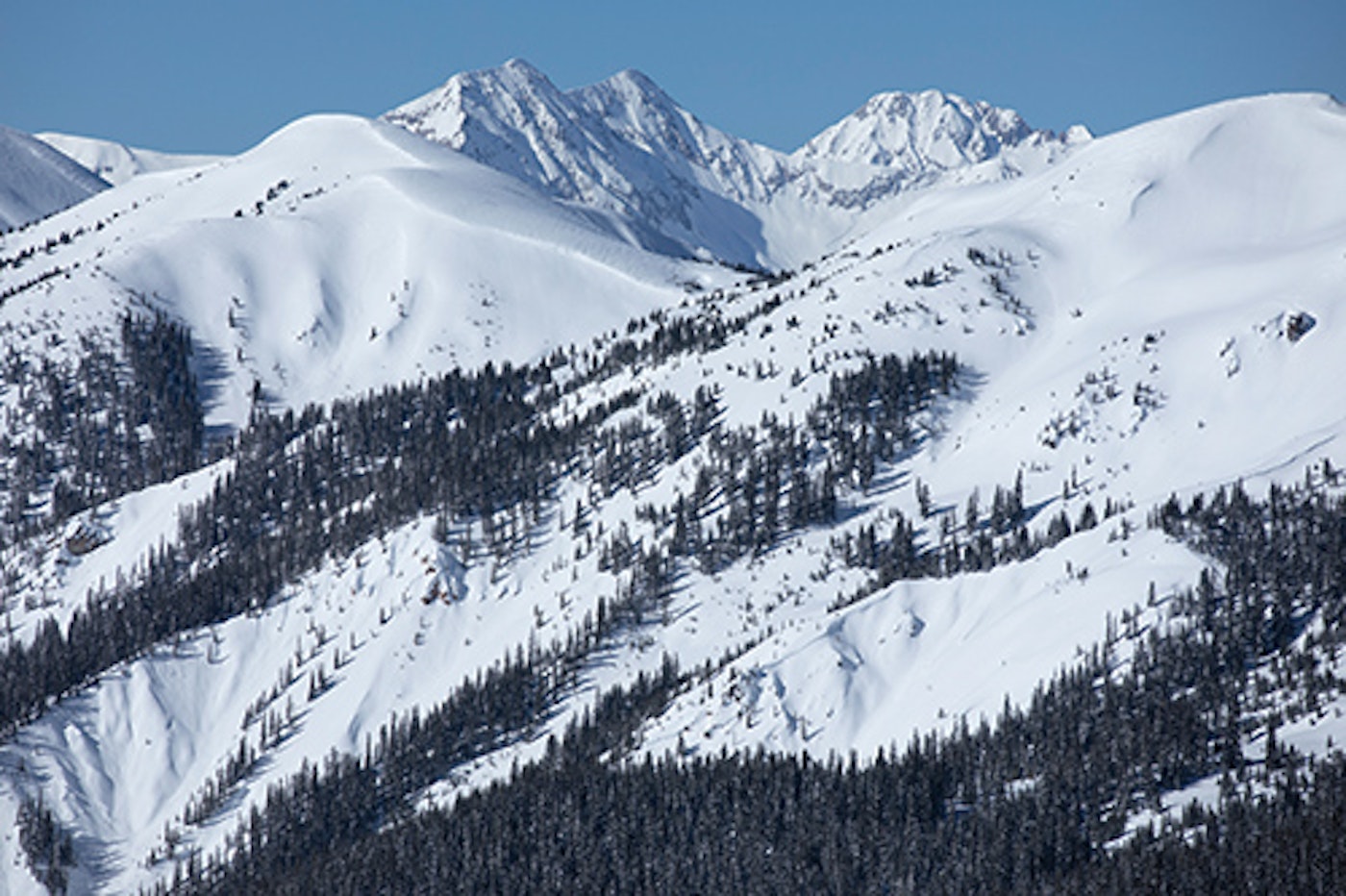
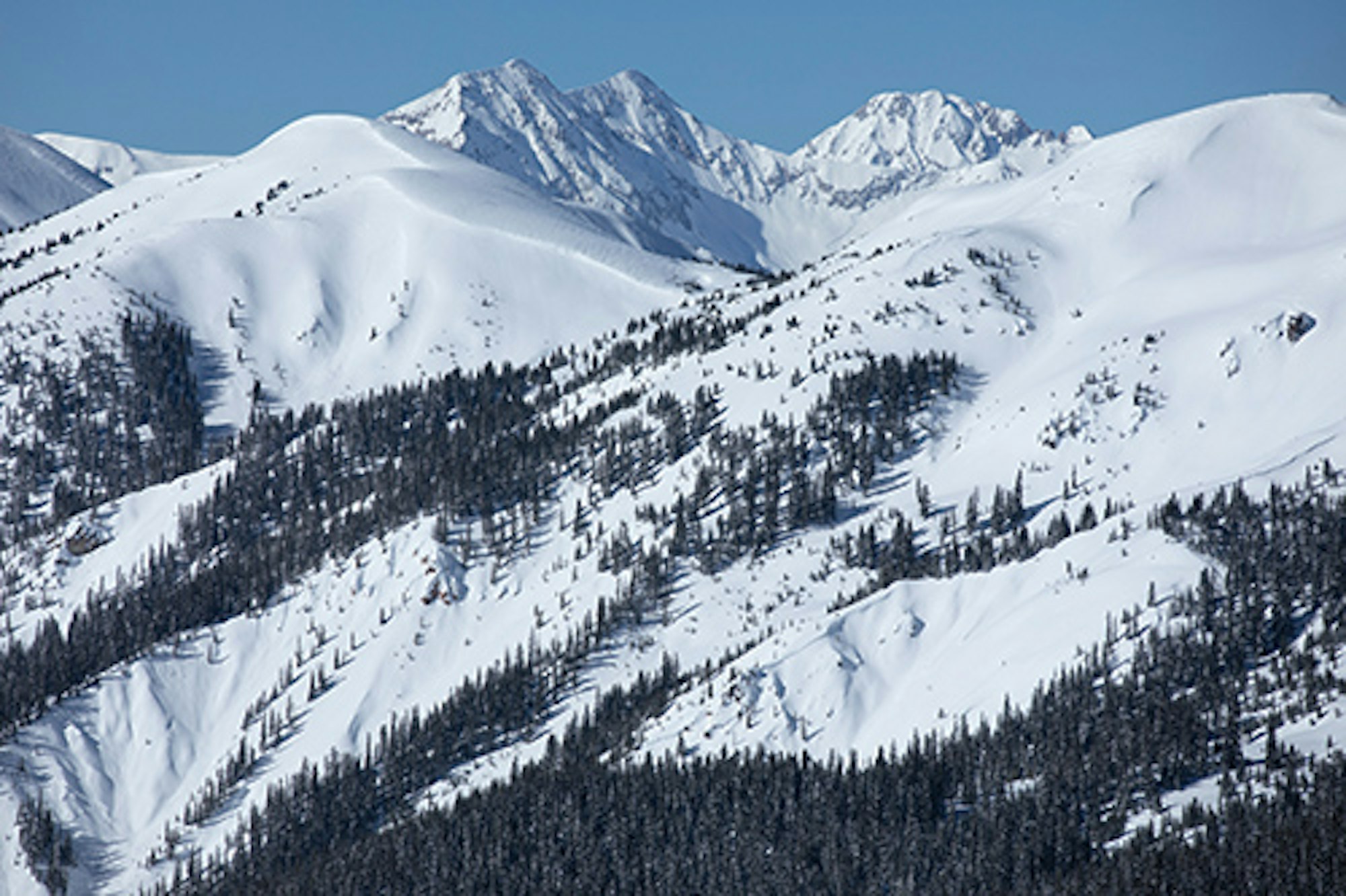
“I went from disciple to friend,” Brill said. And when she was asked why she thought like-minded powder skiers lead a life of two-planked devotion, like Dolores did, Brill offered, “Because it’s the right thing to do. It’s about that feeling: elation, that ever-present presentness, fully engaged without your brain. There’s not one word to describe it. I don’t know why. It’s a feeling. But Dolores’ words are the closest thing to that feeling.”
After skiing a deep, joy-filled two days in Telluride, I pulled into Silverton and parked in front of Dolores’ former home, which was bookended with piles of snow taller than the roof. The more I’d read of her writing, the more I felt a kinship with, and a devotion to, her understanding of a skier’s place within the sacred combination of gravity, earth and weather. Standing outside of her home, I felt a need to be reverent, like I was walking on Holy Ground. And when I spoke to her friends, former miners John and Bill, at the bar at Avalanche Brewing Co., I felt I had a responsibility to channel her and her skiing philosophy. When I asked about Dolores, the pair swaybacked their shoulders and took an almost liturgical posture. “She believed in skiing for skiing’s sake,” Bill told me. “She believed in communion,” John added. “The town still feels her lasting impact, her lasting effect.”
Early the following morning, I drove my Subaru into the snow- and mud-mixed parking lot of Silverton Mountain. It’s nearly 2,000 acres of precipitous terrain and is filled with chutes, bowls and cliffs in a delightful craggy mixture from the peak height of 13,487 feet to the base at 10,400 feet. The road from town to the single-chair-lift resort had seen constant clearing efforts since the start of the storm. Front-end loaders had carved a path through avalanche debris with 20-foot tall, football field-long swaths of snow and jackstrawed trees. At face value, the San Juan Mountains seemed to be puffing out their chest in aggression, but I felt calm and simultaneously excited. I was to be shown the goods around the mountain by my friend, Silverton guide and San Juan skiing legend John Shocklee. Like Dolores, John’s ruggedness, heartiness, soul, style, infectious smile, laugh and lifelong commitment to the deep turn embodies everything about the San Juan Mountains and the skiing within them that I love. It was St. Paddy’s Day, the forecast called for bluebird conditions and the mountain was fat with virgin powder. Days like this are why powder zealots have a pickerel smile, a resting ski face.
John and I spent our day booting up to runs below The Billboard, like Rope Dee Dope and Ramp, and tracing deep creamy lines through Waterfall and Riff Raff. John, a telemark skier, genuflected every turn, offering humble respect to the snow and the mountain. His childlike smile burst from behind the icy wool of his salt and pepper beard. The snow, the conditions, the day—it was perfect. Both John and I relinquished ourselves to the rhythmic unconscious competence of deep-powder skiing’s ballet. And at the bottom of every run we hooted and hollered, we high-fived, we hugged. Everything whitewashed into a blurry singular moment of pure deep snow elation and bliss.
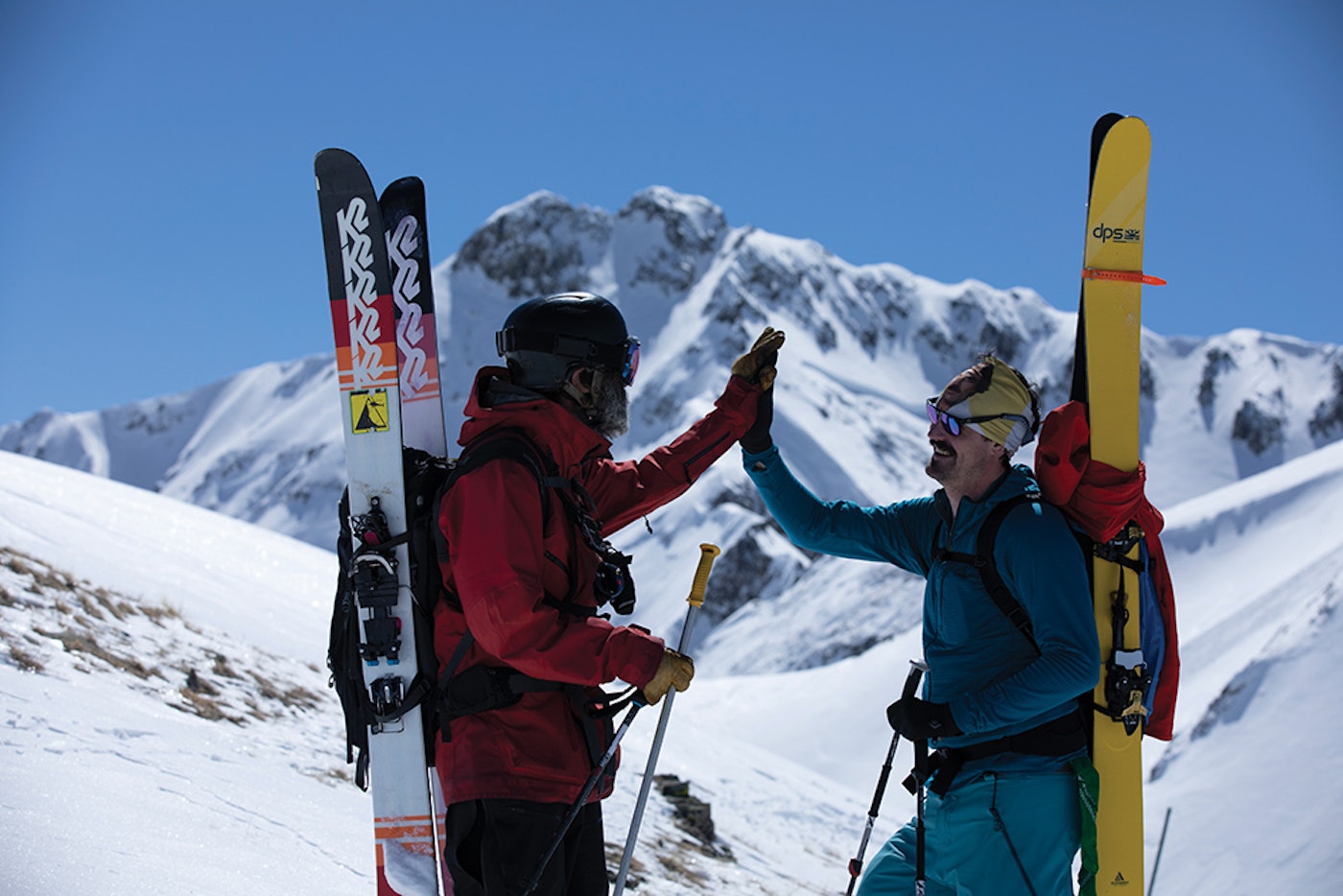
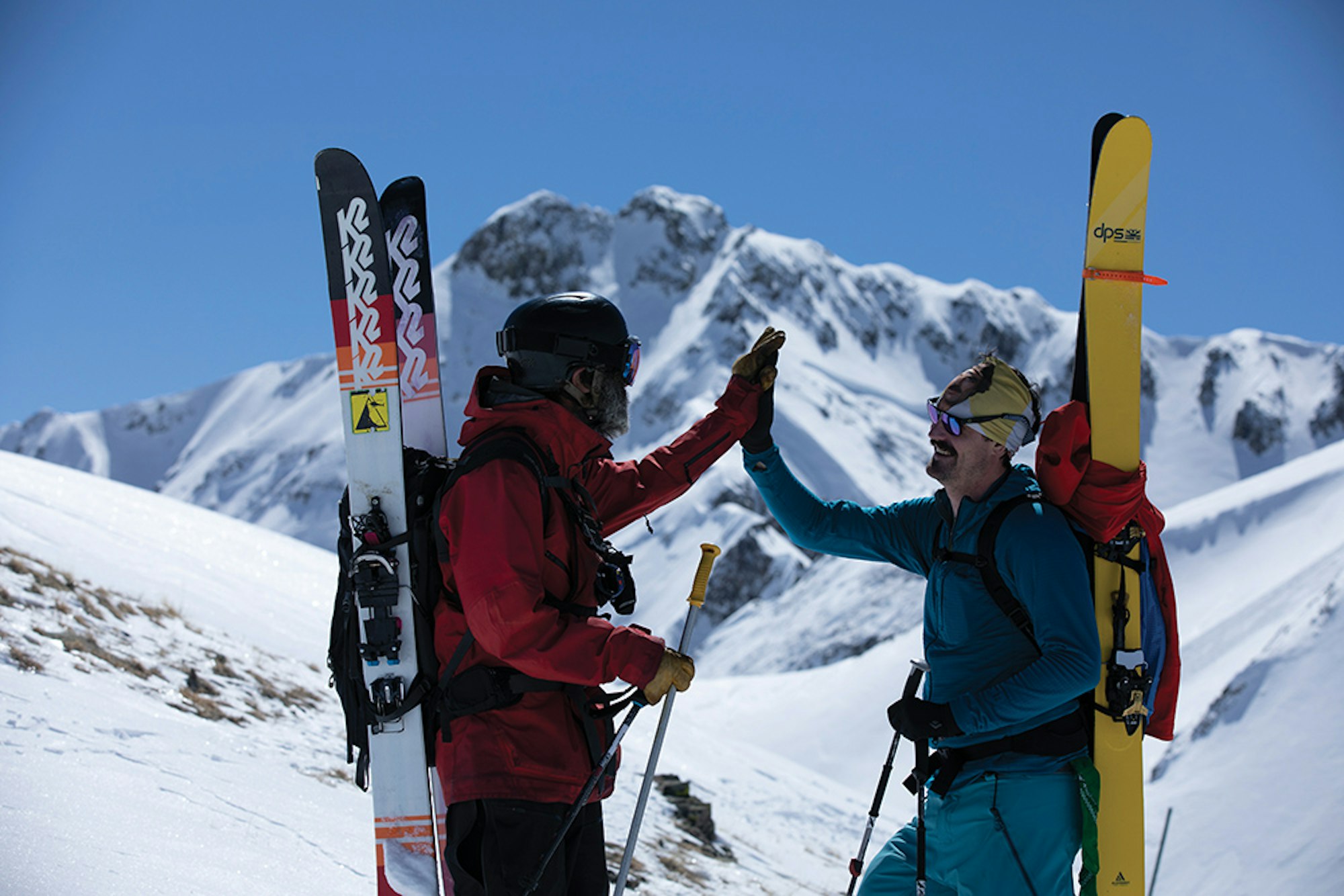
High-fives with John Shocklee, reveling in the spirit of Dolores LaChapelle.
At the close of the day, John and I stood on the ridge and were enwrapped in the golden early evening sun before taking our final run on the north side of the mountain. It was this—the unique alpenglow and peace found atop the San Juan Mountains’ vaulted fins—that made Dolores leave the perfect powder of Alta and settle in Silverton. The historically dangerous snowpack and the feast or famine snowfall of the San Juans should have been a deal-breaker for a skier like Dolores. When I told John that I was amazed she’d ever left the “greatest snow on Earth” in the Wasatch Range, he answered immediately. “The ruggedness of the San Juans requires creativity for survival,” he told me. “And it continues to reward that creativity, specifically for skiers.”
I dug Deep Powder Snow out of my pack. I’d been carrying it with me everywhere since Telluride, hoping it would be a beacon. I looked at the picture of Dolores that had come with the book, read a few underlined passages and my scribblings in the margins. I took a quieting breath before dropping into the awaiting field of flawless deep white, hoping to find the wintry scripture, to hear Dolores’ credo of nival expanses.
I bounced into the sacred cadence that the mountain keeps for skiers, snow boiling up toward my face and flagging off my shoulders and head. I sat into the snow as my skis smeared in a cradling swish. I emptied myself of expectations, of predetermined lines, the need for control. And so began the dance, where the mountain always leads, where the self is lost and being is gained. In that moment, skiing bridges the gap between the here and the heavens. All struggle washes away and we become one with everything and everyone around us, and we can understand the lessons learned from a life spent in close relationship with the Earth. It’s a place where perfect happiness, reverence, gratitude and joy swirl about in an explosive symphony. It is the deep powder turn.
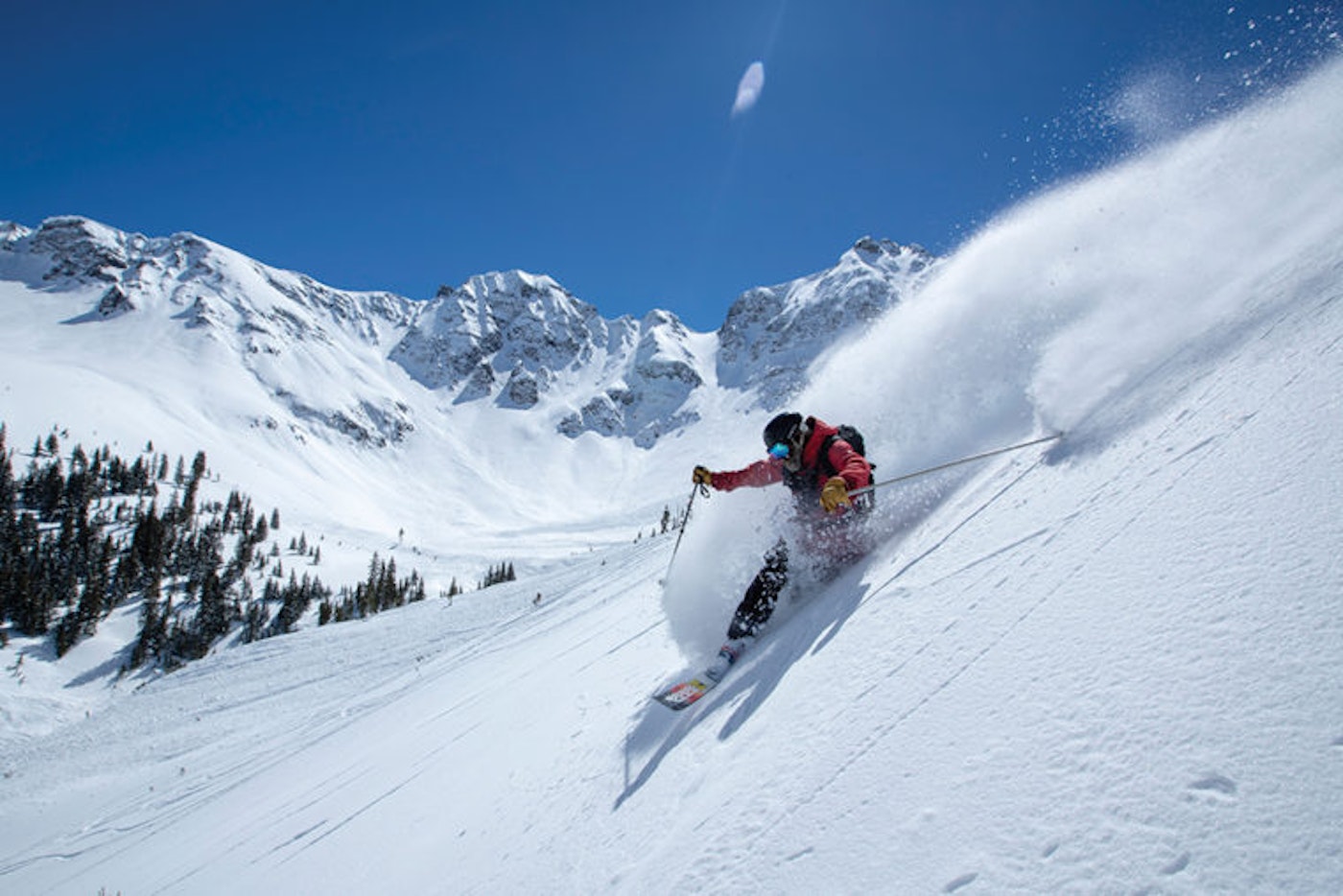
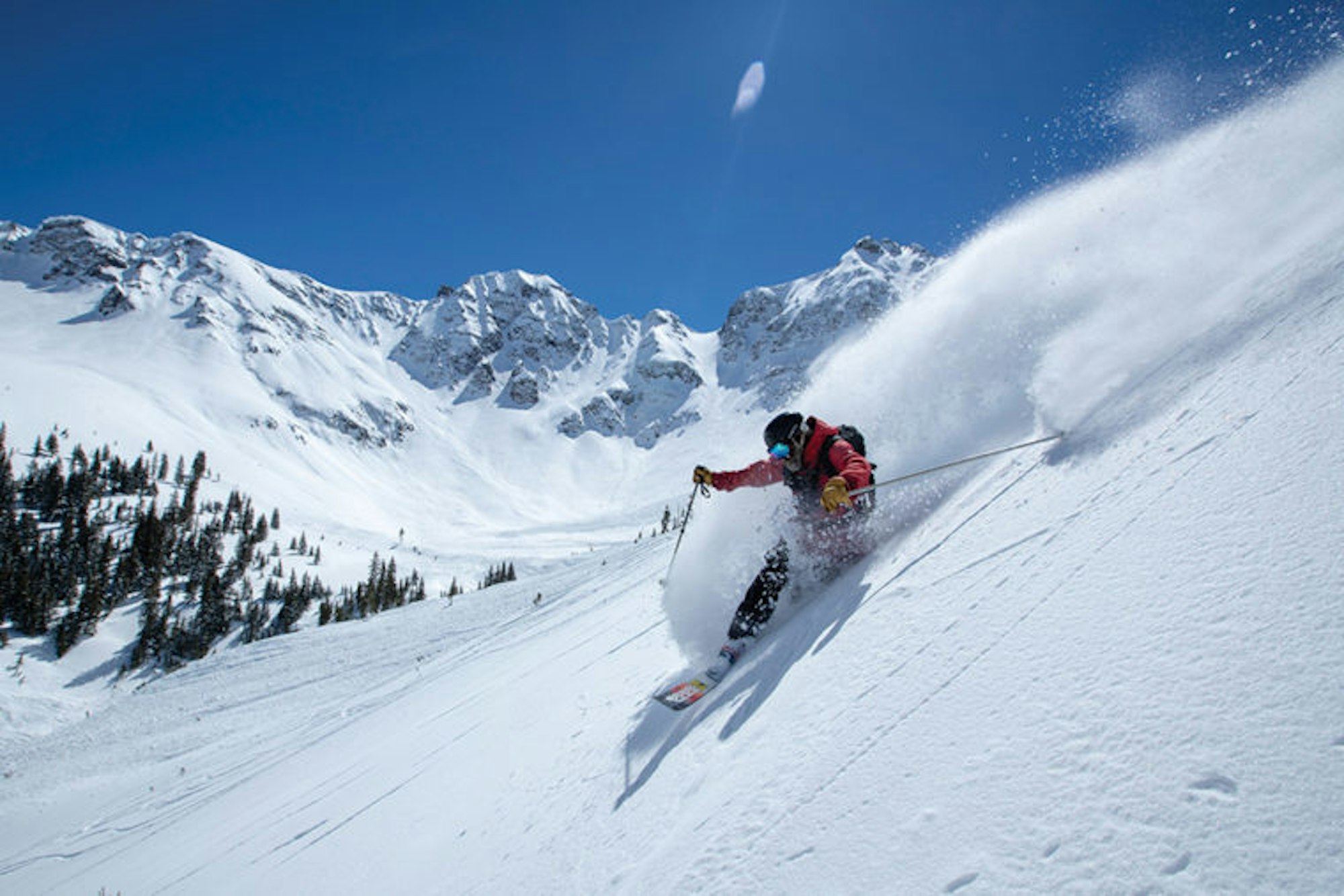
Skier: John Shocklee | Location: Silverton Mountain, CO
It’s nearly impossible to find a word, a phrase or sentence that comes close to a cumulative expression of what powder skiing is and what it can do for us. I think all powder skiers sign a contract to live a life devoted to that search. But somehow, Dolores found them. I will be looking for Dolores’ words for the rest of my life, knowing full well that I will have to countlessly resign myself to inadequate barbaric yawps. But the words are waiting for us somewhere in the depths, within the delicate tendrils left hanging in the air and the smooth strokes we leave behind us. Deep powder snow is our parchment, our skis the quill. We are defined by our turns.
This story originally appeared in FREESKIER 22.3, The Backcountry Issue.

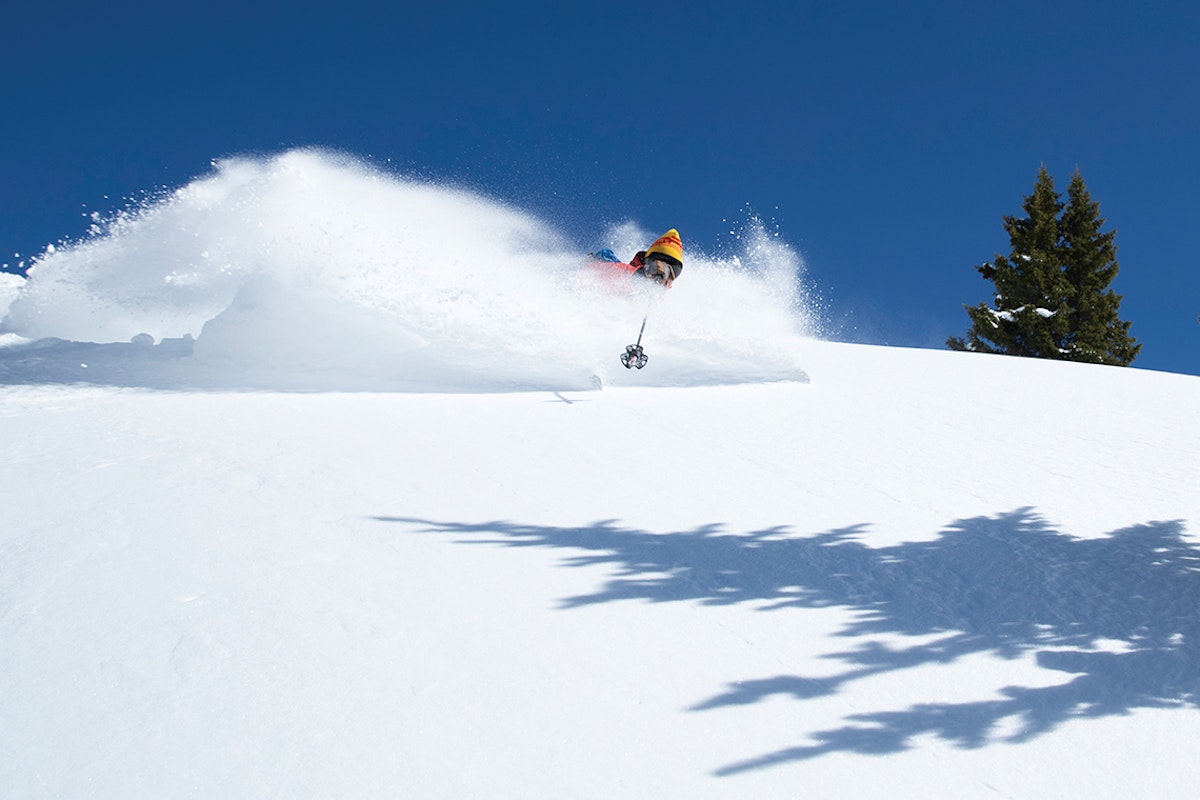

![[GIVEAWAY] Win a Head-to-Toe Ski Setup from IFSA](https://www.datocms-assets.com/163516/1765920344-ifsa.jpg?w=200&h=200&fit=crop)


![[GIVEAWAY] Win a Legendary Ski Trip with Icelantic's Road to the Rocks](https://www.datocms-assets.com/163516/1765233064-r2r26_freeskier_leaderboard1.jpg?auto=format&w=400&h=300&fit=crop&crop=faces,entropy)




![[GIVEAWAY] Win a Head-to-Toe Ski Setup from IFSA](https://www.datocms-assets.com/163516/1765920344-ifsa.jpg?auto=format&w=400&h=300&fit=crop&crop=faces,entropy)


